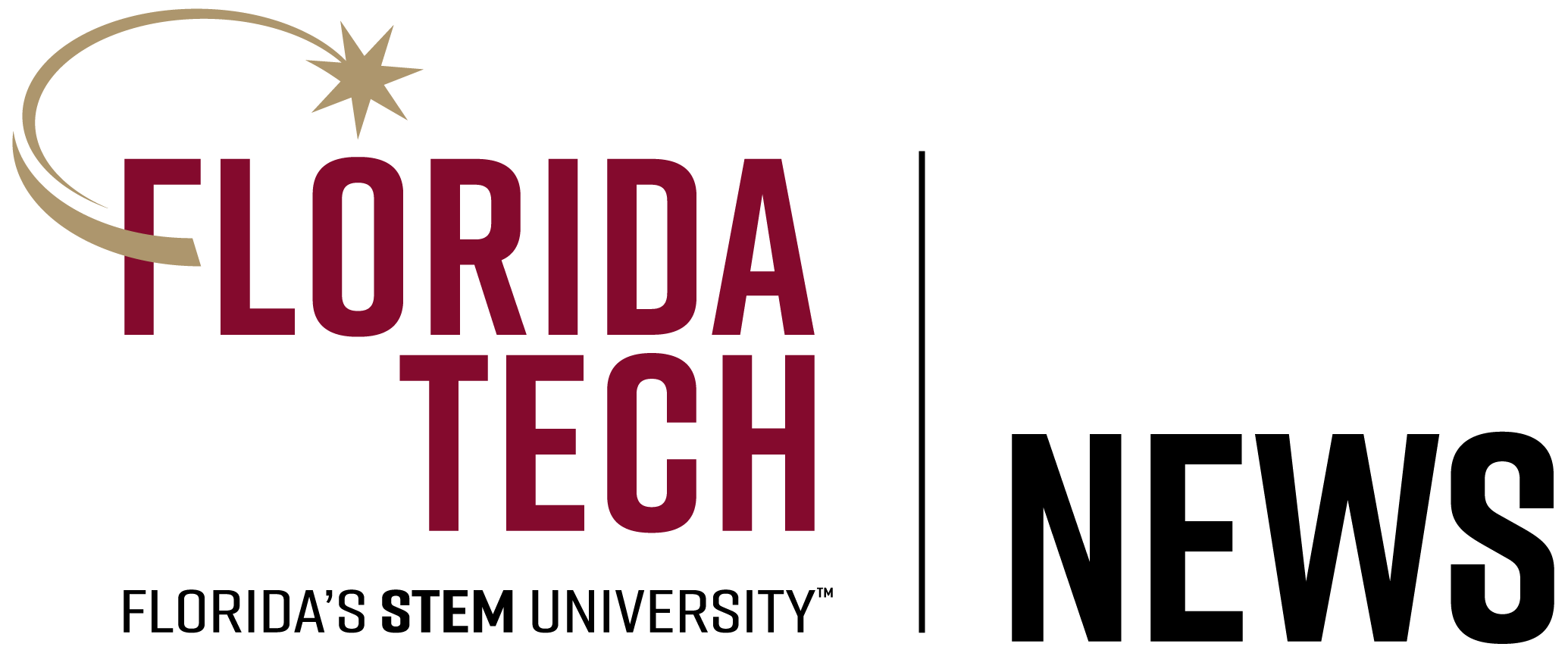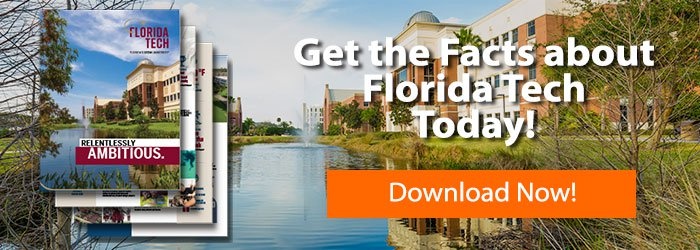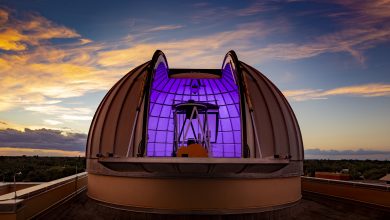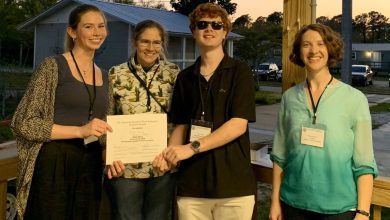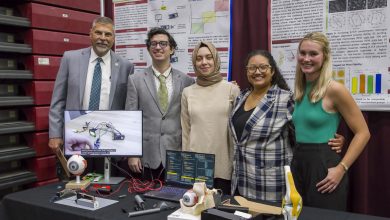Get a spine!
Friday, May 18, second entry. As Liza handles a walrus skull (note tusk sockets!), the Florida Tech Biological Oceanography students get ready to spend an hour or two in the Birds and Mammals Lab/Museum. This was a change of pace from the rest of our course, as this lab features vertebrate animals rather than invertebrate and environmental issues to which we have become accustomed. There were 30 rare and bizarre samples on display, which the students had to do their best to identify with minimal preparation. The samples varied from very large things to very small parts… of very large things.

The Emperor Penguin skeleton shows calcification around a broken leg – how did it get broken? A Leopard Seal? We’ll never know… The Walrus skull was incredibly dense and even hard to lift (see image at top of post). The Sea Otter skeleton was prepared in what would be a position for floating on its back at the surface of the ocean.

Some of the Biological Oceanography students from Florida Tech knew these bizarre, hairy plates were actually the baleen of different kinds of whales, including a Right Whale, which truly has some impressive baleen!

This scapula (shoulder blade) is likely from a Gray Whale (wow!).

The “birds-on-sticks” were an albatross and petrel, and the bird skeleton was also a Petrel. These pelagic birds can have a wingspan of up to 3.7 meters, giving them the greatest wingspan of any bird in the western hemisphere (they are edged out slightly for first place in the world by an African stork). The Biological Oceanography students from Florida Tech found some other uncommon specimens included a Loggerhead Turtle heart and a Harbor Porpoise fetus!


